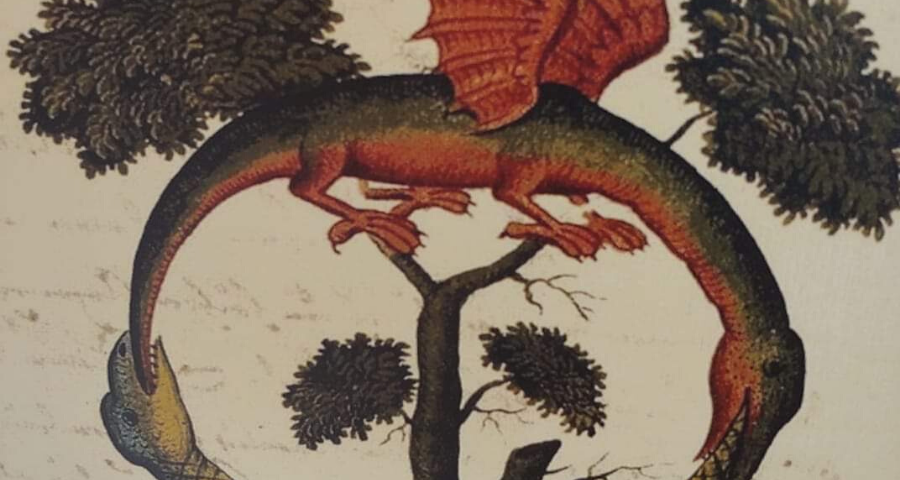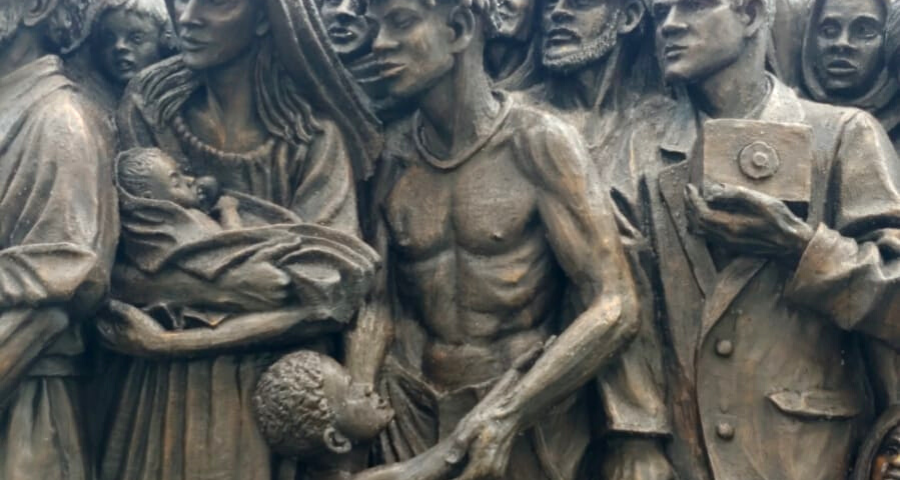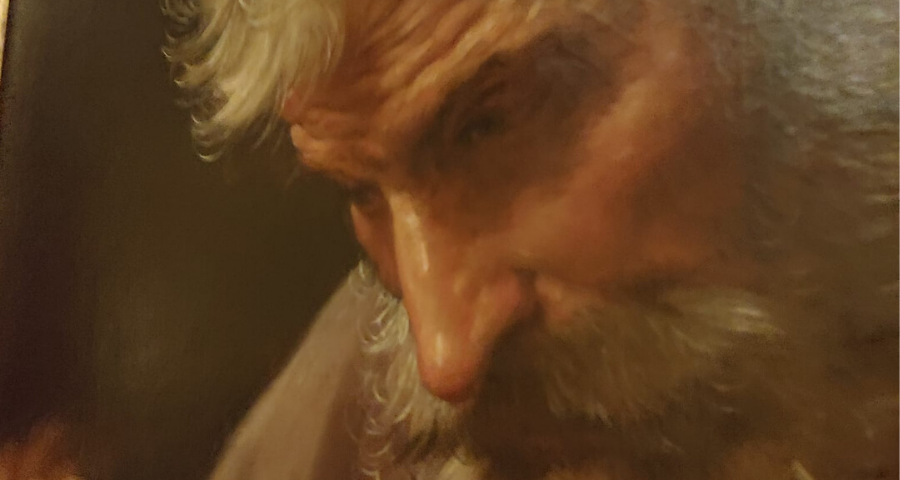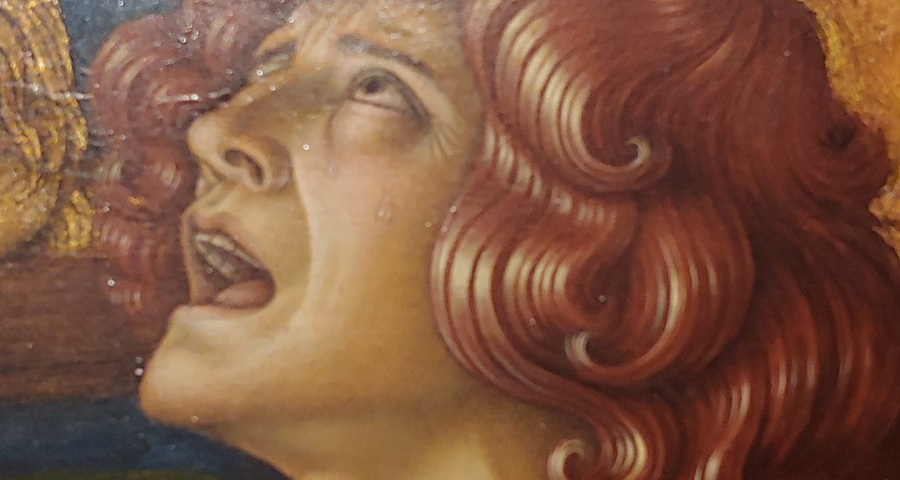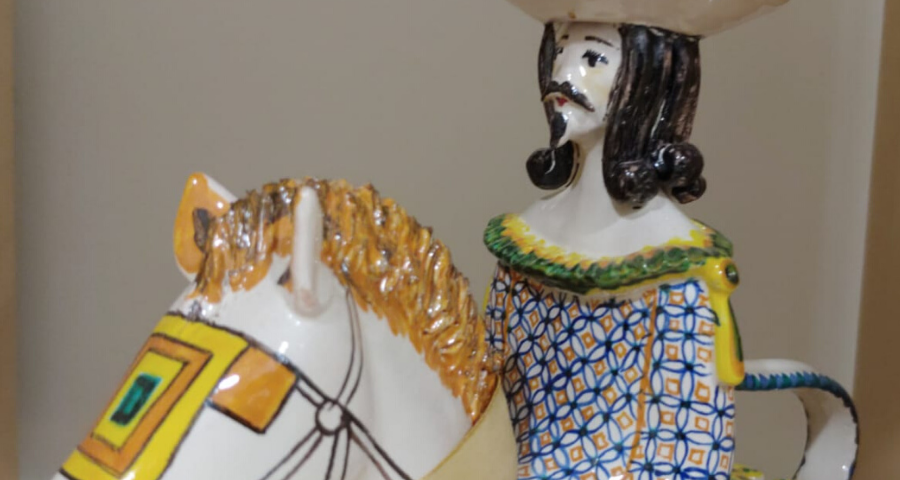Prophecy is history / 25 - Authentic justice is also preventing the past from killing the future
By Luigino Bruni
Published in Avvenire 24/11/2019
"The bronze serpent at the time of Hezekiah no longer provided healing, indeed instead it caused damage: the values of the past can do this, because no guarantee is given by God as to the things he has made use of from time to time".
Paolo De Benedetti, Hezekiah and the Bronze Serpent
The art of any reform is to be able to understand which elements of the origins are to be saved and which are to be destroyed. Just like King Hezekiah knew what to do with the Ark and the Bronze Serpent.
The past, the origin and the roots of a story and a life are often essential resources to understanding how and where to continue that story and that life. Sometimes, however, in some rare and crucial phases of communities and institutions, the reference to the beginning can turn out to be a downright deadly trap. There are times when we would need to view the spirits of the past in the light of present experience; as often happens in families, where the sense of a painful event experienced by the grandfather reveals, three generations later, the luminous story of a nephew. A past is alive and life-giving if it also knows how to change, die and rise again in the present. In human affairs, sometimes the fruits contribute to regenerating the roots. During a process of reform in a community, institution or organization for example, the origin of a tradition, a rule, or a principle, is often not enough to understand its present and future purpose and meaning. We also need to look at today, at the current use made of it. When ethical reform is needed in a community or an institution, it is necessary to know which traditions of its origin are to be preserved and which would do better to be forgotten.
The northern kingdom was conquered by the Assyrians. And that superpower now also threatened the kingdom of the South, Judah, and the capital Jerusalem. In the meantime Hezekiah ascended the throne: «He did what was right in the eyes of the Lord, just as his father David had done» (2 Kings 18,3). Finally, after a long series of more or less corrupt and idolatrous kings, a just king arrives. His rectitude is manifested in his fight against idolatry and in the affirmation of the monotheism of YHWH, a subject very dear to the author of these historical books. In fact, «He removed the high places, smashed the sacred stones and cut down the Asherah poles» (2 Kings 18,4). Destroyed the "high places", that is the altars in ode to the various foreign gods placed in the high places (the infamous bamot, hated by all the prophets), and that the various predecessors, even the best, had failed to eliminate, evidently because they were revered and loved by the people (the people of the Mediterranean and the Middle East have always loved the "altarin", and still love them). Along with these, he also eliminated the ritual stelae (the massebot) and the sacred piles (the asere), symbols of fertility associated with the female divinity Asherah / Ishtar / Astarte, a very popular and venerated goddess in the area. But the most original element of Hezekiah's religious reform is another. Hezekiah «broke into pieces the bronze snake Moses had made» (2 Kings 18,4). The religious zeal of this king led him to destroy a relic, a sacred object that even went back to Moses, the icon of the Law and the Covenant with YHWH. Perhaps no name more than Moses evoked the name of YHWH on earth, no one was more of a symbol of cultural purity, of anti-idolatrous struggle (the golden calf), of the only true and different God than he was. Why then did Hezekiah destroy a documented object that directly evoked the memory of Moses, also linked to an important episode of the Exodus, part of the tradition and history of the liberation from Egypt?
That bronze serpent first made its appearance during a crisis of faith among the people, which had begun to murmur and miss the good food they received while in slavery. God punished them («Then the Lord sent fiery serpents among the people, and they bit the people, so that many people of Israel died»). The people asked Moses to intervene and obtain forgiveness. Moses prayed and «the Lord said to Moses: "Make a snake and put it up on a pole; anyone who is bitten can look at it and live"... Then when anyone was bitten by a snake and looked at the bronze snake, they lived» (Numbers 21,6-9). Therefore, that bronze serpent was built by Moses following a precise word from God, it was a "sacrament" of a theophany and memory of an important stage in the history of salvation. An episode that has remained alive for centuries in the Jewish tradition, and which we also find in the New Testament, as an image of the crucifix: «Just as Moses lifted up the snake in the wilderness, so the Son of Man must be lifted up, that everyone who believes may have eternal life in him» (John 3,14-15). Yet Hezekiah, a just and faithful king, decides to destroy that serpent of Moses, extending his "creative destruction" of idols even to that blessed object, souvenir and memory of a blessed passage of history, built by the greatest prophet, shaped by his holy hands. We can imagine how much that snake was loved, how much the people worshiped it, how many prayers were recited at its feet by simple people in search of help and mercy. And in fact, the text also adds: «For up to that time the Israelites had been burning incense to it. It was called Nehushtan» (2 Kings 18.4). And it is precisely in this veneration, in this burning incense and in giving it a name, that we find the explanation as to why Hezekiah eliminated it. When incense is burned in reverence to an object and, above all, a name is given to it, that object is no longer just a mere symbol, a memorial, an icon; that object with incense and a name has in fact become an idol. That bronze serpent had in time moved away from its original purpose and meaning, and its use had become, in fact, idolatrous.
The very origin of that serpent already had archaic elements that bordered on shamanic and magical practices. Healing - or trying to heal – people from evil, while using the image of the same evil as a medium (snake bite with the eyes of a snake) is an expression of a very ancient magic technique, called homeopathic (it takes one to cure one). That snake therefore had a complex and partly hybrid origin, perhaps learned in Egypt, where magical and divinatory practices were widely spread and of common use. We know that in the ancient history of Israel, the prophets (Samuel, Ezekiel) still retained some traces of archaic prophetism, the novelty of biblical prophecy had become intertwined with the practices of the soothsayers and the haruspex Canaanites, Assyrians and Babylonians. This object of Moses, the serpent, had therefore undergone an evolution over time, and as a relic of liberation, of Sinai and Exodus, it had since begun to live its own life. The bond with Moses, strong at the beginning, had given way to contamination with the Canaanite cults. And when Hezekiah arrived in the eighth century its transmutation turning into an idol was already complete. The greatness of this king was exceptional in actually finding the courage to associate that serpent of Moses with the stelae of Astarte and the altars of the other pagan gods. He would have met strong resistance among his own people, but if the text has wished to leave a small trace of this inconvenient fact for the editors (a king who destroys a relic of Moses), it is because this episode hides something important in the economy of biblical history - and in our "economy".
Moses had also had the Ark of the Covenant built, which in the time of Hezekiah was still kept in the temple of Jerusalem. The serpent of Moses was destroyed, but the Ark was not. Because, we deduce, the Ark had actually preserved its original meaning and use, it was both the memory and sacrament of the Covenant. According to tradition, it contained the Tablets of the Law, but these objects, unlike the serpent, had not become idols. And so, in Hezekiah's religious reformation, the Ark instead had to be preserved to keep the memory alive. The Ark was a symbol that spoke of just things, which correctly linked past and present, while constituting in essence a sign indicating the right way to go in that time of ethical and spiritual turning points. Not so the serpent. Although it had the same origin, its present could not reconnected in good conscience with the past. During the eighth century, the Moses of the serpent was altogether different from the Moses of the Ark, and Hezekiah had the wisdom and intelligence to understand it. This is a fundamental fact, which can tell us many things in times of reform and renewal of communities. In these crucial phases, everything depends on knowing how to distinguish the snake from the ark. A very difficult operation indeed, because both the ark to be preserved and the serpent to be destroyed were created by Moses himself; their origins are written in the same sacred books, they are both part of the history and words of the prophets. Communities begin a slow but inexorable decline when they become too attached to their origins without looking at the current meaning of their realities and their own people. A tradition should not be saved merely because it was created by the founder or a prophet. Because if the origin was excellent, but the use has become perverse, no reform is possible without the courage to destroy these traditions, objects, rules and values from their holy origin, and remove those people who, while good in the beginning, have eventually lost themselves along the way.
The history of communities and movements in this regard, often show us rather dark scenarios. The most common cases are those in which, by absolutizing the origin, the communities end up keeping both the ark and the snake, and so with time the serpent devours the ark. This outcome is very common because the origin of the snake is guarded, together with the ark, as part of the intimate history of the community, and destroying them would be seen by the majority as a betrayal of their inheritance. Probably quite a few scribes and scholars would have reminded and read the passage of the writings of the miracle of Moses in the desert to Hezekiah, when he first communicated his decision to destroy the serpent. He was a just king because he prevented the past from killing the future. Other times, both the snake and the ark are destroyed instead. We feel the risk of idolatry as it has become a part of the origin, but not knowing exactly how or where, failing to distinguish it, we end up destroying all the past. Hence, losing contact even with the good origin (the Ark), leading to a slow death, like a plant without roots. But the worst death is that which occurs when communities, while reforming, end up keeping the snake and destroying the Ark. In this case we die believing that we are alive, because the community is not extinguished but is transformed into a community of worshipers of the serpent Nehushtan, convinced, often in good faith, that they are still worshiping the same God of their origin. In telling us the story of Hezekiah, the Bible tells us that another outcome is possible as well: we can save the Ark and destroy the snake. This is the most precious aspect in any reform process, the crucial talent of every true reformer. Hezekiah was a much loved king: «Hezekiah trusted in the Lord, the God of Israel. There was no one like him among all the kings of Judah, either before him or after him. He held fast to the Lord and did not stop following him; he kept the commands the Lord had given Moses» (2 Kings 18, 5-7). He was "faithful to the decrees of Moses" also because he had the strength to destroy his bronze serpent while keeping his Ark.
Download pdf article in pdf (321 KB)






